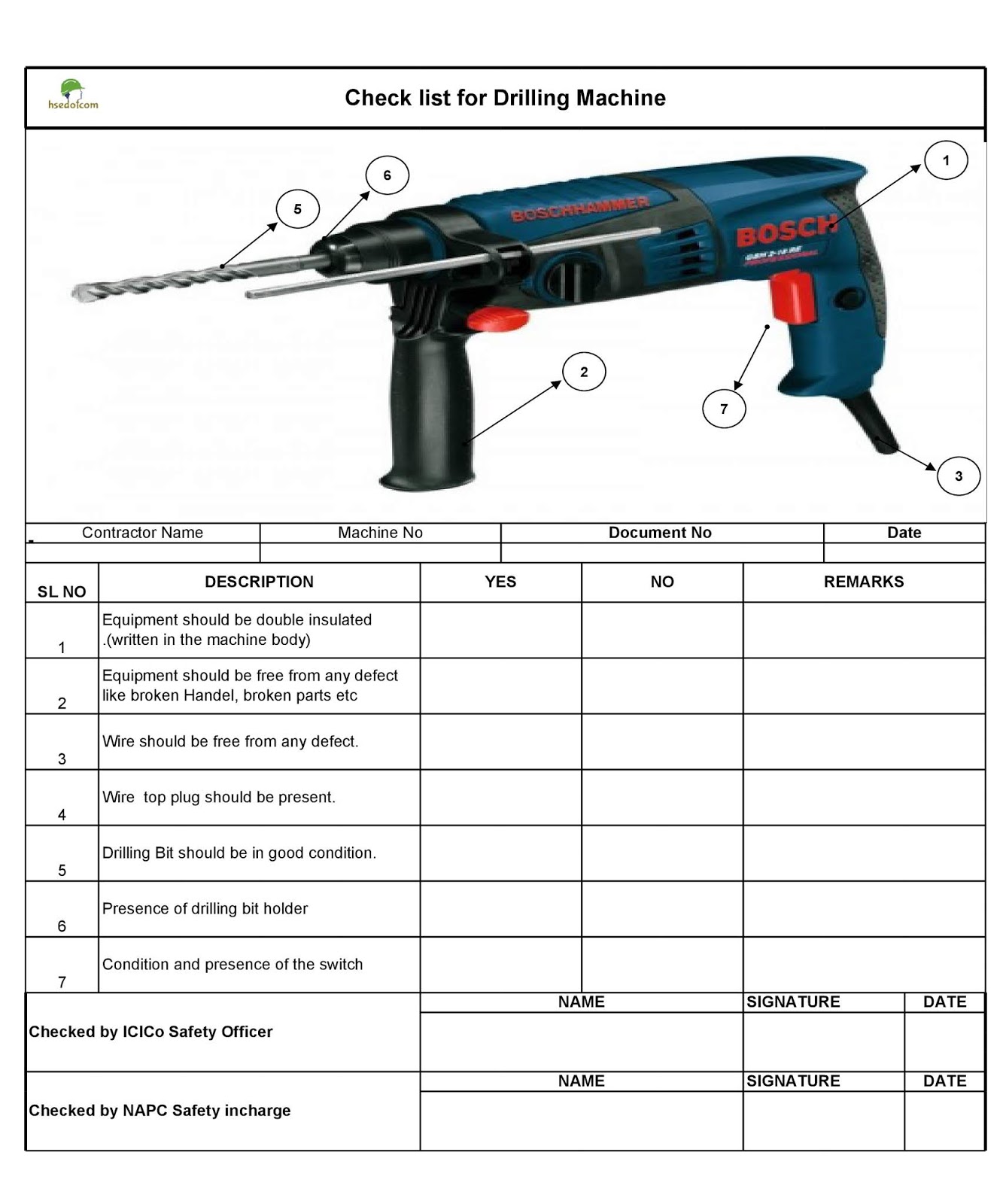Power Up Safely: Your Guide to Portable Power Tool Inspections
Imagine a construction site buzzing with activity, workers wielding powerful tools to shape the future. But what if those tools, the very instruments of progress, pose a hidden danger? A frayed cord, a loose guard, a malfunctioning switch – these seemingly small issues can lead to serious workplace accidents. This is where the vital practice of portable power tool inspection comes in.
Portable power tool inspections, often facilitated by a comprehensive checklist, are the first line of defense against potential hazards. They are not just a bureaucratic box to check, but a proactive measure to safeguard workers and ensure a productive work environment. By meticulously examining each tool for defects, we can prevent accidents, extend tool lifespan, and ultimately contribute to a culture of safety.
The formalization of power tool inspection procedures emerged alongside the increasing use of these tools in various industries. As power tools became more powerful and ubiquitous, the potential for accidents also rose. Organizations and regulatory bodies recognized the need for standardized procedures to minimize risks. This led to the development of structured inspection checklists, tailored to specific tool types and work environments.
The core issue with portable power tool inspections isn't the complexity of the process itself, but rather the lack of consistent adherence to it. Rushing through inspections, using inadequate checklists, or simply neglecting them altogether are common pitfalls. These oversights can have serious consequences, ranging from minor injuries to life-altering accidents. The importance of incorporating power tool inspections into a regular safety routine cannot be overstated.
A portable power tool inspection checklist is a documented procedure that guides users through a systematic examination of a power tool. It typically includes a series of checks for various components, such as cords, plugs, switches, guards, and casings. A simple example would be checking the power cord of a drill for fraying or damage before each use. This seemingly small step can prevent electrical shocks and other hazards.
One key benefit of utilizing a portable power tool inspection checklist is enhanced safety. By identifying and addressing potential hazards, accidents can be prevented, protecting workers from harm. For example, checking the blade guard on a circular saw before use can prevent severe lacerations. Another benefit is improved tool longevity. Regular inspections can reveal minor issues before they escalate into major malfunctions, extending the lifespan of the tools and saving money on replacements. For instance, noticing a loose screw on a drill and tightening it can prevent further damage to the tool. Finally, inspections promote a culture of safety. By making inspections a routine practice, organizations demonstrate their commitment to worker well-being, fostering a more safety-conscious environment.
Implementing a successful power tool inspection program involves several key steps. First, develop a comprehensive checklist specific to the tools used in your workplace. Next, train employees on how to properly use the checklist and conduct thorough inspections. Finally, establish a regular inspection schedule and ensure compliance through supervision and accountability. Successful examples include construction companies that conduct daily tool inspections before starting work, and manufacturing facilities that implement weekly inspections for all power tools.
Regular visual inspections should check for frayed cords, damaged plugs, loose parts, and proper functionality of safety guards. Testing the tool's operation in a safe environment before each use is also crucial.
Advantages and Disadvantages of Portable Power Tool Inspection Checklists
| Advantages | Disadvantages |
|---|---|
| Increased Safety | Time Consuming (initially) |
| Reduced Costs (long term) | Requires Training |
| Improved Tool Longevity | Potential for Overlooking Issues |
Five best practices: 1. Customize checklists. 2. Train thoroughly. 3. Enforce regular inspections. 4. Document findings. 5. Regularly review and update checklists.
Five real-world examples where inspections prevented accidents could include instances where damaged cords were identified, preventing electrocution; loose guards were fixed, preventing lacerations; malfunctioning triggers were addressed, preventing uncontrolled tool operation, etc.
Challenges and solutions could include resistance to implementing inspections (solution: highlight the benefits of safety and cost savings), lack of time (solution: integrate inspections into existing workflows), and inadequate training (solution: provide clear, hands-on training).
FAQs can cover topics such as who should conduct inspections, how often inspections should be performed, what to do if a tool fails inspection, where to store checklists, etc.
Tips and tricks can include using color-coded tags to indicate inspection status, utilizing mobile apps for digital checklists, and incorporating inspections into toolbox talks.
In conclusion, implementing a robust portable power tool inspection program, underpinned by a comprehensive checklist, is not merely a best practice but a fundamental necessity for any organization utilizing these tools. It's an investment in safety, productivity, and the overall well-being of the workforce. By proactively identifying and addressing potential hazards, we create a safer and more efficient work environment. The benefits – reduced accidents, extended tool life, and a stronger safety culture – far outweigh the time and effort involved. Commit to regular inspections and empower your team with the knowledge and tools they need to work safely and effectively. Let's prioritize safety and make portable power tool inspections an integral part of our everyday operations. Embrace this crucial practice and cultivate a workplace where safety is not just a priority, but a deeply ingrained value.
Unlocking the wendys enigma exploring the age of the iconic pigtailed face
The art of the counter attack in football
Spice up your discord chat mastering different text styles












